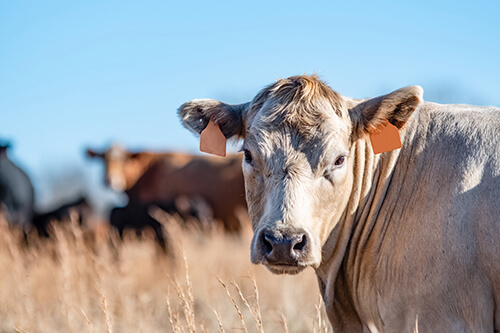A Mild Winter?
Mar 02, 2020

This winter has often been referred to as a mild one since we’ve experienced only a few short periods of below-freezing temperatures. However, what may seem mild to humans sleeping in a dry, warm home may be taking its toll on cattle forced to deal with long periods of wet, cool weather.
Cattle with a full winter coat can easily tolerate temperatures down into the 30s without issue, but a wet coat loses its insulative capacity causing animals to struggle to maintain body heat in temperatures as high as 59°F. Shivering, increased heart rate, and increased metabolic rate generate heat, but also consume lots of energy. A rule of thumb for dry conditions is a 1-percent increase in energy is required to maintain bodyweight for every degree below the critical temperature. For wet animals, the rule increases to 2 percent. So, for a cow to maintain bodyweight in 40°F, she needs roughly 40 percent more energy than she would at 60°F. That’s huge, and they aren’t likely to find it in a roll of hay. Extra nutrition in the form of low-starch supplements will help prevent loss of body condition and resulting poor reproductive rates.
Mud is another negative factor associated with a mild winter. Cattle will attempt fewer trips to the hay ring, and each time they do, they expend extra energy just getting there and back. Also, mud on udders contributes to pathogen exposure of nursing calves, and weak newborn calves can become trapped in mud, resulting in injury or death.
A mild winter?…think about it from your cattle’s point of view.
Cattle with a full winter coat can easily tolerate temperatures down into the 30s without issue, but a wet coat loses its insulative capacity causing animals to struggle to maintain body heat in temperatures as high as 59°F. Shivering, increased heart rate, and increased metabolic rate generate heat, but also consume lots of energy. A rule of thumb for dry conditions is a 1-percent increase in energy is required to maintain bodyweight for every degree below the critical temperature. For wet animals, the rule increases to 2 percent. So, for a cow to maintain bodyweight in 40°F, she needs roughly 40 percent more energy than she would at 60°F. That’s huge, and they aren’t likely to find it in a roll of hay. Extra nutrition in the form of low-starch supplements will help prevent loss of body condition and resulting poor reproductive rates.
Mud is another negative factor associated with a mild winter. Cattle will attempt fewer trips to the hay ring, and each time they do, they expend extra energy just getting there and back. Also, mud on udders contributes to pathogen exposure of nursing calves, and weak newborn calves can become trapped in mud, resulting in injury or death.
A mild winter?…think about it from your cattle’s point of view.